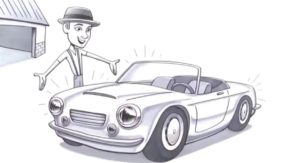Accidents happen. Whether it’s a minor fender bender or a more serious collision, car owners often face the daunting task of dealing with the aftermath. One of the biggest concerns is determining the cost of collision repair. This blog post aims to demystify the factors influencing these costs, providing car owners with valuable insights to make informed decisions. We’ll explore everything from the basics of collision repair to the hidden costs and strategies for managing expenses. By the end, you’ll have a comprehensive understanding of collision repair costs and how to navigate them effectively.

Understanding the Basics of Collision Repairs
Collision repairs can range from fixing minor dents and scratches to addressing major structural damage. Knowing the types of damage that are common after an accident can help you understand the repair process and associated costs.
- Minor Dents and Scratches
These are often the result of low-speed impacts or parking lot mishaps. They usually involve surface-level damage that can be repaired relatively quickly and inexpensively.
- Moderate Damage
This includes issues like bumper damage, broken lights, and minor frame damage. These repairs require more time and specialized tools, leading to higher costs.
- Major Structural Damage
High-speed collisions can result in significant structural damage, affecting the integrity of your vehicle. Repairing this type of damage is complex and costly, often involving advanced techniques and specialized equipment.
Factors That Influence Collision Repair Costs
Several variables can significantly impact the final bill for collision repairs. It’s essential to understand these factors to manage your expectations and budget effectively.
- Severity of Damage
The more severe the damage, the higher the repair costs. Minor dents and scratches cost less to fix compared to major structural damage that requires extensive labor and specialized tools.
- Type and Quality of Replacement Parts
Using original equipment manufacturer (OEM) parts can be more expensive but ensures quality and compatibility. Aftermarket parts are cheaper but may not offer the same level of performance and durability.
- Labor Costs and Repair Techniques
Labor rates vary based on location, the skill level of technicians, and the complexity of the repair. Advanced repair techniques, such as paintless dent repair, can also influence the overall cost.
- Vehicle Make, Model, and Year
Luxury and exotic cars often come with higher repair costs due to the specialized parts and labor required. Older models might also be more expensive to repair if parts are scarce or discontinued.
Hidden Costs in Collision Repairs
While the primary repair costs are often the most visible, several hidden expenses can catch car owners off guard.
- Diagnostic and Teardown Fees
Before repairs begin, technicians may need to conduct a thorough diagnostic and teardown to assess the full extent of the damage. These preliminary steps can add to the overall cost.
- Additional Damage Discovered During Repairs
It’s not uncommon for additional issues to be discovered once repairs are underway. These unexpected findings can lead to higher costs and extended repair times.
- Paint and Finishing Costs
Matching the paint color and finishing the repairs to blend seamlessly with the rest of the vehicle can be costly. High-quality paint jobs and finishing touches ensure that the repaired area is indistinguishable from the original.
How to Navigate the Cost of Collision Repairs
Managing collision repair costs can be challenging, but with the right approach, you can minimize expenses and ensure quality repairs.
- Understanding Insurance Coverage and Policies
Review your insurance policy to understand what is covered and what isn’t. Comprehensive coverage often includes collision repairs, but there may be deductibles and limits to consider.
- Getting Multiple Estimates
Don’t settle for the first estimate you receive. Getting quotes from several repair shops can help you find the best price and ensure that you’re not overpaying for repairs.
- Asking Questions and Seeking Transparency from Repair Shops
Don’t hesitate to ask questions about the repair process, parts used, and the timeline for completion. A reputable repair shop will be transparent and willing to explain the details to you.
Conclusion
Understanding the cost of collision repair is crucial for car owners. By being aware of the factors that influence pricing, recognizing hidden costs, and knowing how to navigate the repair process, you can make informed decisions and manage expenses effectively. Remember, proactive car maintenance and repair can save you money in the long run.
Experience top-notch collision repair at East End Body Shop in Huntington, WV! With our expert team and state-of-the-art technology, we ensure your vehicle gets the quality care it deserves. Enjoy quick turnaround times and personalized service that sets us apart. Trust us to restore your car’s glory and get you back on the road with confidence. Visit East End Body Shop today and see why we’re the preferred choice for collision repairs!

